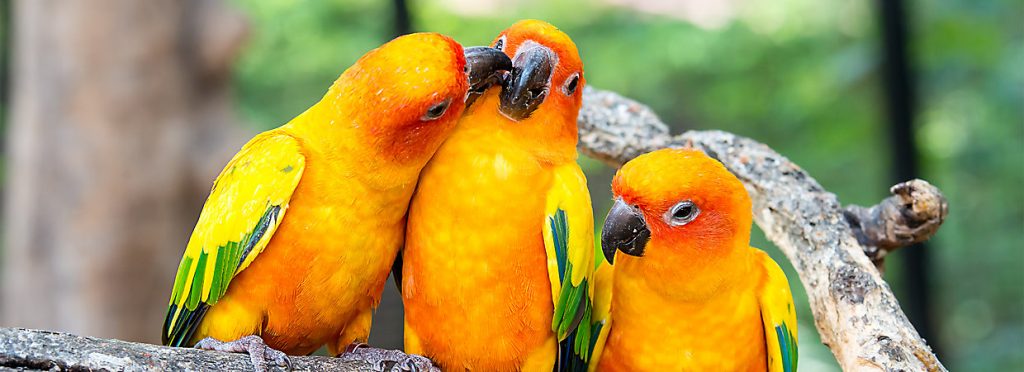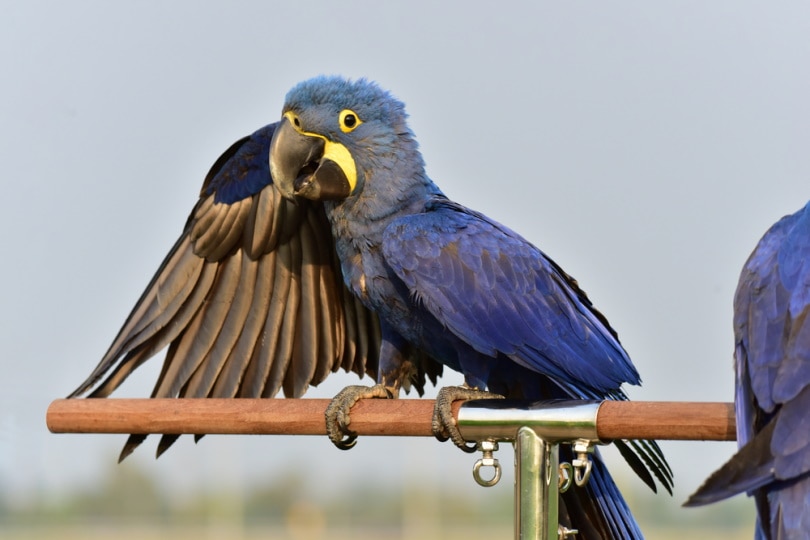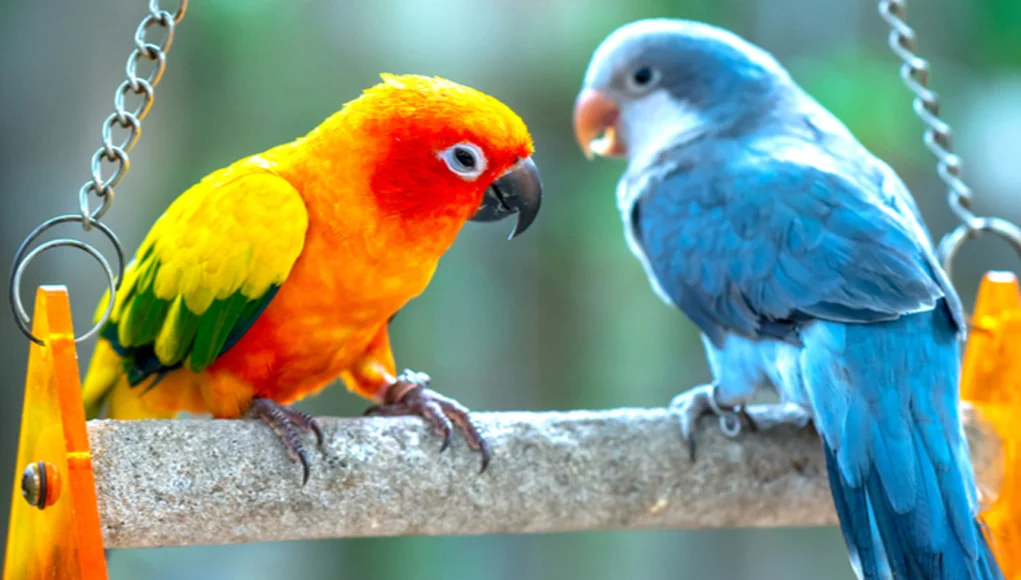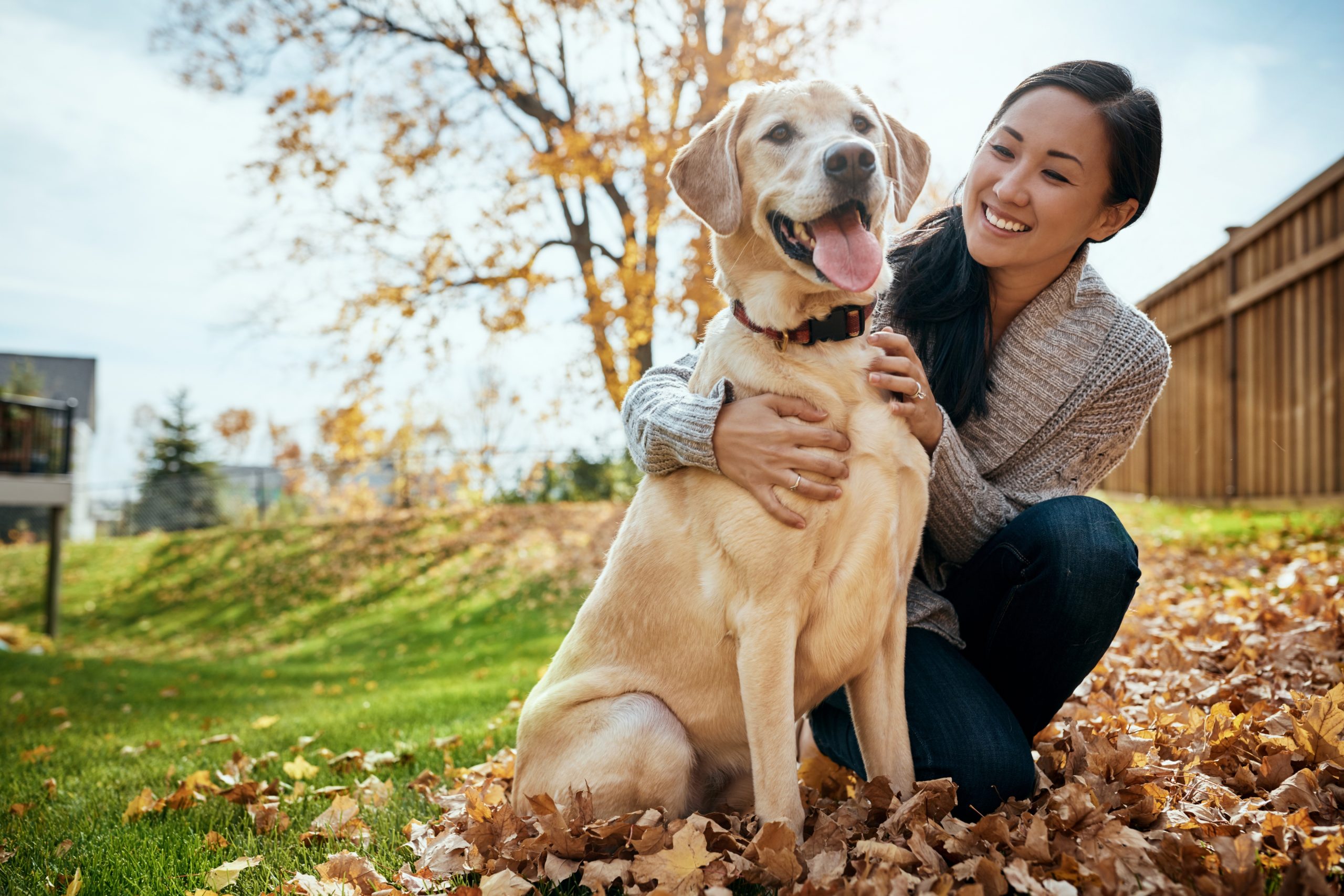A pet bird is a domesticated bird species that is kept and cared for by humans. Owning a pet bird can bring numerous benefits to one’s life. They are intelligent creatures that can provide companionship and entertainment. Pet birds are social creatures and can create strong bonds with their owners. They can mimic human speech and interact in various ways, making them fascinating and engaging pets.
However, owning a pet bird also comes with responsibilities and compromises. Birds require proper care and attention to ensure their well-being. They need a suitable habitat, including a cage with appropriate-sized bars to prevent escape and potential injury. Their diet must be balanced and consist of a variety of foods to maintain their health. Providing clean water bowls and a clean living environment is crucial to prevent illnesses and keep the bird healthy.
It is important to consider several factors before adopting or purchasing a pet bird. Preparing the home to make it safe for the bird is necessary, including removing toxic plants and securing windows and doors. Birds also need mental stimulation, so providing perches and toys is essential to keep them entertained and engaged. Additionally, owning a pet bird requires a level of commitment as they can live for many years.
Choosing the Right Bird Species
When it comes to owning a pet bird, one of the most important decisions you’ll need to make is choosing the right bird species. There are a wide variety of bird species to choose from, each with its unique characteristics and needs. Consider the size of the bird and the space you have available in your home. Larger birds, such as African Grey Parrots, may require a larger cage and more room to roam. Additionally, think about the level of interaction and socialization you desire. Some bird species, like budgies or finches, are more independent and require less attention, while others, like cockatoos or macaws, crave constant companionship. Research the different bird species to find the one that best fits your lifestyle, personality, and housing situation. By choosing the right bird species, you can ensure a harmonious and fulfilling relationship with your feathered friend.

Considerations for Different Types of Birds
When it comes to choosing a pet bird, there are several factors to consider that can greatly influence its health, happiness, and compatibility with your lifestyle. Not all birds are suited to living as domesticated pets, so it’s important to choose a bird species that is healthy and well-socialized.
Some bird species, such as budgies, cockatiels, and lovebirds, are known for their friendly and outgoing nature, making them excellent choices for first-time bird owners. These birds are generally comfortable being handled if approached gently and confidently.
On the other hand, larger bird species like African Grey parrots and Macaws require more experience and knowledge in bird handling. These birds are incredibly intelligent and social creatures, but they can also be more challenging to care for due to their size and potential hormonal behavior.
When interacting with any bird, it’s crucial to handle them gently and confidently, as birds can easily sense fear or hesitation. Providing mental stimulation through toys, social interaction, and a balanced diet is also essential for keeping your bird happy and healthy.
Remember to always do research and seek guidance from experienced bird owners or avian veterinarians to ensure you provide the best care for your feathered friend. By considering the different needs and characteristics of various bird species, you can find the perfect pet bird that fits your lifestyle and brings joy to your home.
Understanding Different Behaviors of Birds
Birds, whether they are smaller species like budgies or larger ones like African Grey parrots, exhibit a range of behaviors that can provide valuable insights into their well-being. By understanding these behaviors, bird owners can better meet their pets’ needs and ensure their overall health and happiness.
One common behavior among birds is beak grinding. This rhythmic movement of the beak is often a sign of contentment and relaxation, similar to how humans may hum or take deep breaths to calm themselves. It is especially prevalent during sleep and can indicate that your feathered friend is feeling secure and comfortable in their environment.
Preening is another behavior that birds engage in to keep their feathers clean and in good condition. It involves using their beak to groom their feathers and arranging them back into their proper place. Preening is not only a hygienic practice but also serves as a way for birds to maintain their insulation and waterproofing properties.
Regurgitating food can be seen as both a natural behavior and a form of affection from a bird toward their owner or mate. It is commonly observed during courtship or bonding rituals and is a way for birds to share food as a display of trust and affection.
Playing is essential for a bird’s mental and physical stimulation. Birds love to interact with toys, mimic sounds, and challenge themselves with puzzles. Providing a variety of toys and opportunities for play can prevent boredom and ensure a healthy level of mental stimulation.
Birds, like cats, sometimes take cat naps. They may perch in a comfortable spot and briefly close their eyes. These short rest periods help them conserve energy throughout the day.
Bird owners need to observe and understand their pets’ behaviors. By recognizing and interpreting these behaviors, owners can gauge their bird’s well-being, detect any signs of stress or discomfort, and provide the appropriate care and attention. Remember, each bird is unique, so getting to know your feathered companion and their behaviors will help you build a strong bond and ensure their happiness.
Maintaining a Healthy Diet for Your Bird
Maintaining a healthy diet is crucial for the overall health and well-being of your pet bird. Different bird species have unique dietary requirements that must be met to ensure their optimal health.
For smaller birds such as budgies, cockatiels, lovebirds, canaries, and finches, a balanced diet consists of a mix of pellets, seed mix, vegetables, and fruits. Roughly 70% of their diet should be made up of high-quality pellets, which provide essential vitamins and minerals. The remaining 30% can be a mixture of seeds, including millet and sunflower seeds.
Vegetables and fruits should also be included in their diet to provide necessary antioxidants, fiber, and hydration. Leafy greens like kale, spinach, and lettuce, as well as fruits such as apples, berries, and melons, are excellent choices.
Having a balanced diet is essential for promoting your bird’s overall health and longevity. A proper diet helps prevent obesity, malnutrition, and various health conditions. Conversely, an improper diet can lead to weight gain, nutrient deficiencies, and a weakened immune system.
To ensure that your bird receives the right nutrients, consult with a veterinarian or avian specialist who can provide specific dietary recommendations based on your bird’s species and individual needs. Remember, a healthy diet is the foundation for a happy, flourishing bird.
Preparing the Cage for Your Pet Bird
When preparing the cage for your pet bird, there are a few important considerations to keep in mind. First, make sure the cage is the appropriate size for your bird. Larger birds, such as African grey parrots or larger parrots, will require larger cages with ample space to move around. It’s also important to consider the spacing of the cage bars, as some bird species may require narrower spacing to prevent them from escaping.
Ideal Size and Type of Cage
It is recommended to invest in a stainless steel cage, as they are durable, easy to clean, and non-toxic. Additionally, make sure the cage has a door that opens down or to the side for safety reasons, as it will prevent your bird from accidentally escaping.
An appropriate cage should have a wire-grated bottom, allowing for proper ventilation and preventing your bird’s feet from getting caught. It should also have a pull-out tray, making it easy to clean the cage regularly. Furthermore, ensure that the spacing between the bars is close enough to prevent your bird from squeezing through or getting its head stuck.
Remember, the cage is your bird’s home, so make it as comfortable and secure as possible. By providing a spacious stainless steel cage with the appropriate features, you’ll be creating a safe and welcoming environment for your feathered friend.
Appropriate Bar Spacing and Material for Cage Bars
Ideally, the spacing between the bars should be small enough to prevent your bird from squeezing through or getting its head stuck. This is especially important for smaller bird species, as they tend to be more agile and can easily slip through larger gaps.
In terms of material, it is recommended to invest in a cage made of stainless steel, powder-coated steel, or powder-coated galvanized wire. These materials are durable and easy to clean, ensuring a safe and comfortable living environment for your feathered friend.
Inspecting the cage regularly for any signs of rust or chipped coatings is also essential. Rust and chipped coatings can be hazardous to your bird’s health, so it is important to address these issues promptly to avoid any potential harm.
By choosing a cage with appropriate bar spacing and high-quality materials, you can provide a secure and comfortable home for your pet bird, ensuring their safety and well-being.
Placement and Accessibility of Water Bowls in Your Cage
Proper placement and accessibility of water bowls in your bird’s cage are crucial for maintaining their health and well-being. Birds need access to clean water at all times for hydration and to support their bodily functions.
When it comes to placing the water bowl, it is important to position it in a convenient and accessible location within the cage. This ensures that your bird can easily reach it whenever they feel the need to drink. Placing it at a height that is easily accessible for the bird, while still keeping it secure and stable, is ideal.
Additionally, it’s essential to provide your bird with clean water every day. Regularly change the water and clean the water bowl to prevent the growth of bacteria and other contaminants. Birds are sensitive creatures, and ensuring they have access to clean water helps prevent illnesses and keeps them hydrated.
Establishing a connection with your pet bird.
Bonding with your pet bird is a crucial part of building a strong and trusting relationship. Just like any other pet, birds need love, attention, and social interaction to thrive. Spending quality time with your feathered friend will not only bring you closer but also provide them with mental stimulation and emotional support. Whether you have a small parakeet or a larger parrot, here are some tips to help you bond with your pet bird.

Introducing Yourself to Your Pet Bird
When it comes to introducing yourself to your pet bird, patience and respect are key. Take the time to allow your bird to feel comfortable with your presence by sitting near their cage and speaking softly. Avoid sudden movements or loud noises that may startle them, as this may hinder the establishment of trust.
To build trust, it’s important to start with slow and gradual interactions. Place your hand near their feet or chest, allowing them to voluntarily step onto your hand. Let them explore your hand at their own pace and avoid grabbing or restraining them. This approach will help them feel more secure and comfortable with you.
Spending time near the bird’s cage and talking to them is also beneficial. This allows the bird to become familiar with your voice and presence. As they become more accustomed to you, gradually increase the amount of time spent together outside the cage. This will further strengthen the bond between you and your feathered friend.
Throughout the process, always remember to be patient and respect your bird’s boundaries. With time and gentle interactions, you can establish trust and build a strong bond with your pet bird.
Getting to Know Your New Pet’s Habits
Bringing a new pet bird into your home is an exciting time, but it’s important to understand the habits and behaviors of your feathery friend. Like humans, birds have their unique personalities and preferences. By taking the time to observe and understand their habits, you can better care for and bond with your pet bird.
One of the most delightful habits of pet birds is their ability to sing and talk. Certain bird species, such as canaries and parrots, are known for their melodic tunes. They may also imitate words and phrases, adding a touch of amusement to your household. Providing your bird with plenty of toys will encourage playtime, another common habit. Birds enjoy tossing and chewing on toys, engaging in physical activity that keeps them entertained and stimulated.
In addition to these habits, birds also dedicate time to grooming and preening their feathers. They meticulously clean their feathers by using their beak to rearrange and align each feather. This grooming behavior helps to maintain their plumage and keep it in optimal condition.
Birds are curious creatures and love to explore their environment. Whether it’s investigating their cage, perching on different objects, or even flying within a supervised area, birds have a natural inclination to discover the world around them. Encouraging their exploratory behavior by providing safe spaces and interactive toys can greatly enhance their quality of life.
Interacting with their owner is also a notable habit of pet birds. Birds are social creatures and enjoy spending time with their human companions. They may engage in friendly gestures such as head-bobbing, wing-flapping, or even gentle nibbling to show affection. Building a strong bond with your bird through regular interaction and positive reinforcement will create a happy and trusting relationship.
It’s essential to note that each species of bird has its own set of unique habits. Some may be more vocal or playful, while others may have a quieter and more reserved nature. Additionally, individual personalities play a significant role in determining a bird’s habits and behaviors.
Establishing Trust with Your New Bird
Establishing trust with your new bird is crucial for building a strong and loving bond. Taking the time to make your bird feel safe and comfortable in your presence is the first step in this process.
Begin by spending time near the bird’s cage without trying to directly interact. Sit or stand quietly nearby, talking softly and engaging in calm activities. This allows the bird to observe and become familiar with your presence without feeling threatened.
As the bird becomes more comfortable, you can start hand-feeding it a favorite treat. This gesture helps to create positive associations with your presence and establishes you as a source of food and care. Be patient and gentle, letting the bird decide when it’s ready to take food from your hand.
Gradually introduce physical touch, starting with gentle strokes on the bird’s back or head, depending on its comfort level. Pay attention to the bird’s body language and cues, respecting its boundaries. Some birds may enjoy being scratched or petted, while others may prefer to have their feathers lightly rubbed.
To further strengthen the bond, incorporate play into your interactions. Birds are naturally playful creatures and enjoy activities like fetch or playing with toys. Allow the bird to explore and engage in these games, ensuring a safe and supervised environment.
Remember, trust-building takes time, patience, and consistency. Each bird is unique, so it’s important to respect their boundaries and preferences. With time and effort, you will create a trusting and loving relationship with your new feathered friend.
Conclusion
In conclusion, pet bird ownership requires a significant commitment of time, effort, and financial resources. It is important to carefully assess whether you are prepared for the responsibilities involved in caring for a bird. If you are willing to invest the time and resources required, having a pet bird can be an incredibly rewarding experience. These feathered friends can become a cherished part of your life, providing entertainment, companionship, and a unique bond that only a bird owner can understand.


